I loved animated Disney movies as a kid. When I was in elementary school in the early ’80s, there was this period when I had not only seen many classics like Dumbo, The Jungle Book, and Pinocchio, but I also owned (very) abridged storybook versions of these movies that were accompanied by records that I’d play on my Fisher-Price turntable that I shared with my younger brother. I had seen the original The Rescuers from 1977 when it was re-released to first-run theaters in ’83, and it became an immediate favorite. I remember that it also seemed surprisingly dark, and images of the sneering, heavily and garishly made-up, middle-aged Madame Medusa haunted me for a long time afterward. I found a DVD copy from a local thrift store a few years back and picked it up immediately. Another anti-heroine who I also found both tragic and terrifying was Cruella de Vil from the 1961 animated film 101 Dalmatians.
I don’t know where to begin with Cruella de Vil, though I realize that I’m now responsible for seeing this metaphor through to completion since I’ve brought it up. I don’t think I was a hypersensitive child. I’ve been making good progress on a journey of learning to un-gaslight myself and to believe in my perceptions as having been real and valid, but believe me when I tell you that de Vil ranks slightly below Jack Nicholson’s Jack Torrance character from 1980’s The Shining in terms of movie villains that had shaken me to my core. There was Cruella’s over-dramatic sense of style; her exaggerated mannerisms; sharp, protruding cheekbones that looked like weapons; and perpetually arched eyebrows over eyes that seemed to convey pure evil and deceit. Never mind the selfishness with which she sought to exploit an entire family of beautiful, spotted dogs for the sake of fashion.
This was one of those book-and-record sets I had owned (or more accurately, co-owned) that had me singing her theme song around the house on repeat, probably to the chagrin of some if not all members of my family. “Cruella de Vil, Cruella de Vil, if she doesn’t scare you, no evil thing will… To see her is to take a sudden… chill! Cruella, Cruella de Vil… ♪♫” I’ve done a lot of thinking about what leads individuals to choose a dark path in life, and so I had later became curious about Cruella’s backstory.
Was her heart broken by some guy? Was she the child of parents who were narcissistic or had struggled with substance abuse? Or, was her sense of entitlement due to excessive coddling as a child? These all seemed like reasonable theories, and the young Cruella (real name “Estella”) had been an heiress. Apparently, the live-action Cruella from 2021 (which I admit I have not yet seen) does reference her childhood trauma, which doesn’t excuse anything even if it explains it.
Getting back to the adult Cruella as I had first encountered her on the big screen, I had trouble believing my later discovery that she and protagonist Anita Darling were actually the same age, having gone to school together! I’m sorry, but the animated Cruella looked decidedly, well, much more mature in age than Anita. Maybe it was my mental association of chain-smoking and fur coats with older women of a certain age and era, but with Cruella, you get the impression that bloom had fallen off the rose a long, long time ago. Could she have been beautiful when she was younger? The fashion industry seems to love tall women, high cheekbones, and unorthodox features. Her two-tone hair notwithstanding, it’s not a stretch to think Ms. de Vil might have been physically attractive (or less unattractive) when she was younger.
Naturally for imaginative me, I had subsequently formed an association between Cruella’s surname and the Cadillac DeVille, which though spelled differently, was pronounced exactly the same. If Cruella de Vil’s name was a wordplay on “cruel devil”, what was a young child without any French lessons at that point to make of the model name “DeVille”? There’s also an interesting trope whereby villains are often presented or outfitted in an affluent manner, employing the use of monocles, top hats, dark suits, and in Cruella’s case, fur coats and fancy cigarette holders. There are examples of poor or raggedy antagonists I can think of, but most of them that I can recall aren’t dressed in clothes from the Salvation Army. Ms. de Vil was clearly a woman of means at my first introduction to her when I was a kid and she was a big, loud, scary, older woman who couldn’t drive.
It has been roughly fourteen years since I had last seen our featured car parked in the neighborhood where Buena Park meets Boystown in Chicago’s north side. Examples of the downsized 1977 – ’79 Cadillac DeVille, and especially the coupe, had been semi-regular sights on the streets of Flint, Michigan when I was growing up. My family didn’t hang around a lot of wealthy people (my parents were one breadwinner and one homemaker), so there were no external influences that had guided me to like this generation of Coupe DeVille… I just did. Cadillac sold just under 122,000 Coupe deVilles for ’79, an impressive figure for a luxury car, at a time when two-door versions of some models carried more cachet than their four-door counterparts (Sedan deVille sales, at 93,000, were about 25% less). In fact, the Coupe DeVille was the single, most-popular individual model and configuration of any Cadillac sold that year.
Much like Cruella looked a bit older and worse for wear as depicted in 101 Dalmations, so did this DeVille. Its chalky silver paint was dull almost to the point of looking like primer, but its body was straight and all of its chrome and lights appeared to be present. There was a slight rake to its suspension, and its factory wheels with wire covers were eventually replaced with a set of Cragars. The car remained looking stock, otherwise. There’s a certain lurid charm that emits from a former glamourpuss like this Coupe DeVille once it no longer looks pampered or garaged. All of its little, individual details are all the more fascinating, like the “Cadillac” script on the side-view mirrors and the slight tilt of the outboard headlamp on the driver’s side. Viewed directly from the front, it’s not hard for me to see the character lines of the hood as looking like heavily sculpted and arched eyebrows staring haughtily at the guy taking its picture.
Cruella also had a problem with driving at a reasonable speed, so with 180 horsepower and 320 lb-ft of torque available from its standard 425 cubic inch V8, this 4,100 pound CDV would have moved her smartly out, even if she wasn’t going to beat anyone during any impromptu stoplight drag races. Have I mentioned that witnessing her loud, horrifying crash scene toward the end of the movie haunted me for months afterward? I don’t really consider that a spoiler since from the moment you see her barreling down the cartoon street in her car that she has something bad coming to her while driving like that.
I’ll occasionally come back across these pictures taken many years ago and I’ll wonder what ever happened to this car and/or its driver. Would I even recognize it with a proper respray and the return of its factory wheels and covers? Would a more conventional makeover have made Cruella de Vil seem less frightening, at least on the surface? I have the feeling that the answer to both questions is simply that we’ll never know.
Lakeview, Chicago, Illinois.
As photographed between November 2009 and January 2011.
Brochure pages were as sourced from www.oldcarbrochures.org.











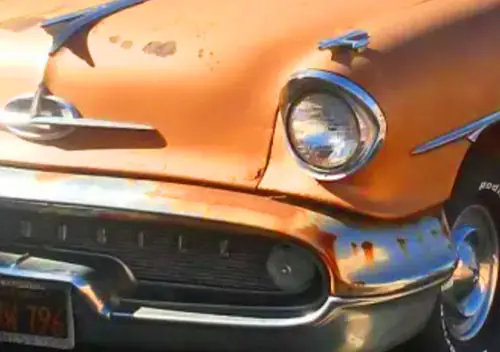
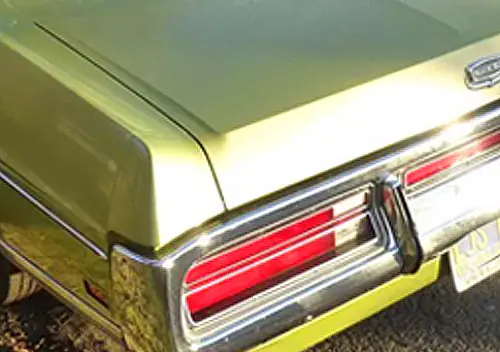
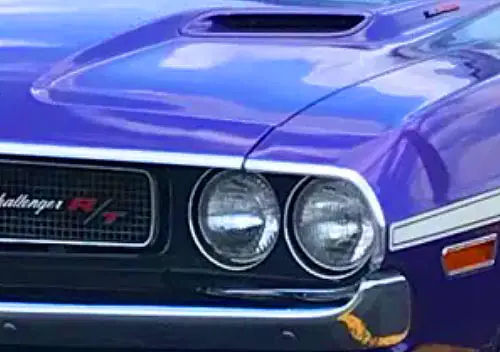

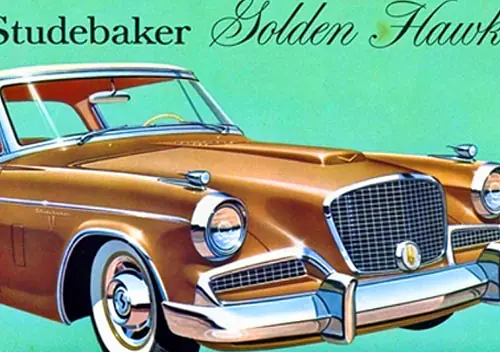
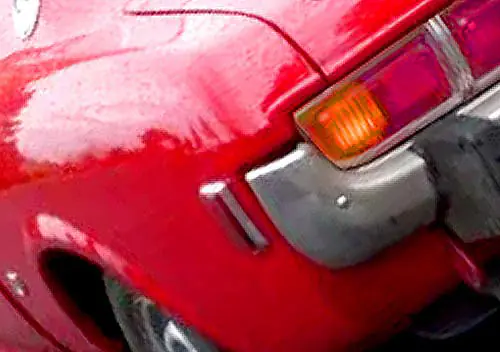
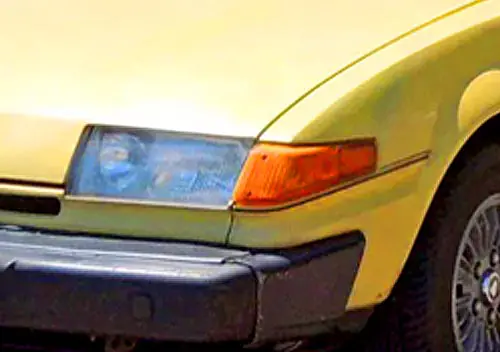
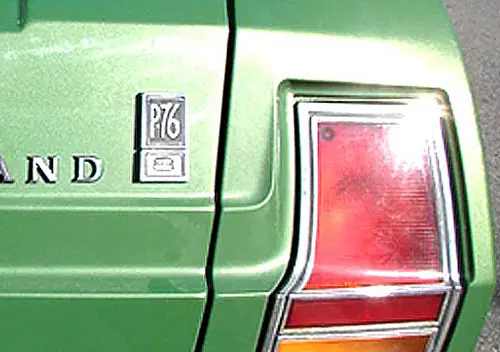
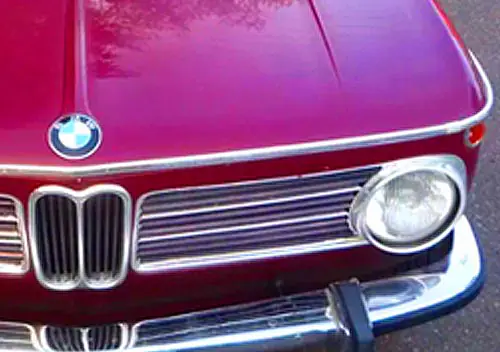
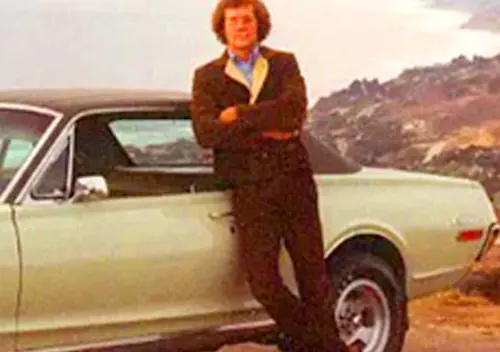

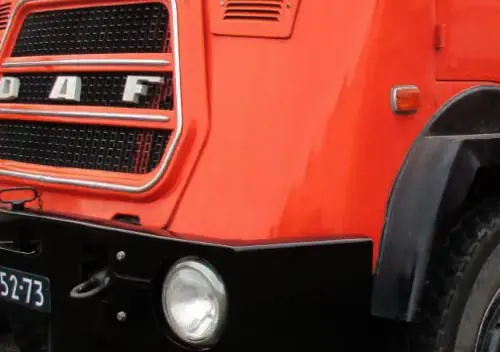
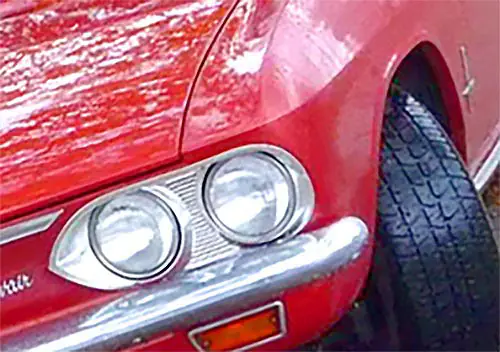
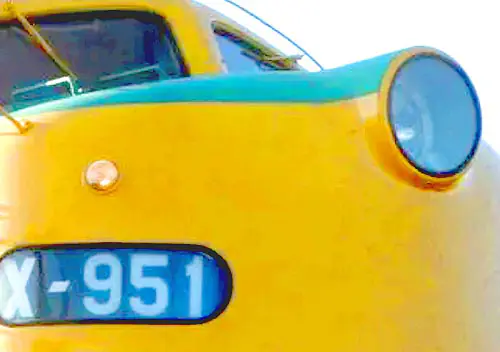
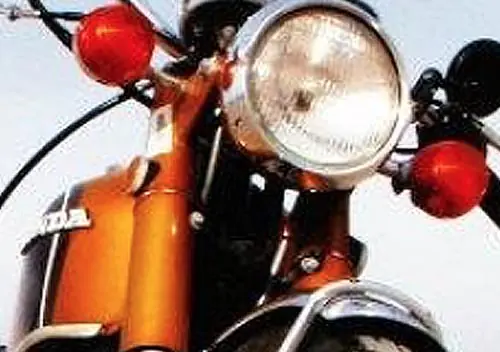
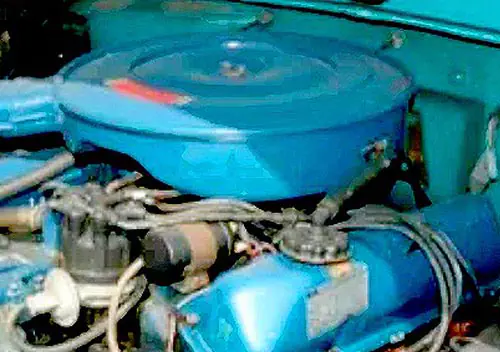

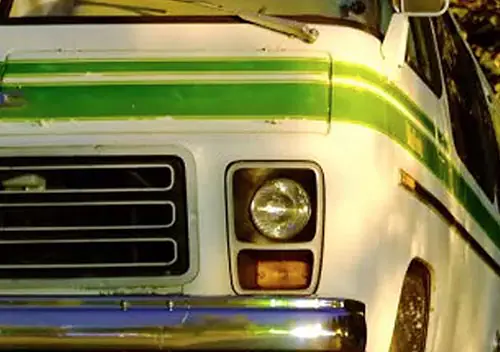

These were great after the wonky B-pillar was corrected and before GM’s typical suicide of variable cylinder deactivation replaced by lightweight aluminum boat anchors
With regard to the B-pillar, I don’t find anything objectionable about this coupe. Did you mean the slanted B-pillar on the Fleetwood sedan? Yeah – it’s also a shame what happened to the powertrain options from 1980 on concurrent with that restyle.
You need to see the 2021 CRUELLA to fully understand. She rose from waif to Couturier with hard work and some luck. Cleverly rising to competition with The House of BARONESS, the de rigouer fashion QUEEN. I won’t spoil the film ending. But both Cruella and the Coupe de Ville could not 🎵 Stay young 🎶and Beautiful 🎵, A song frequently heard in Chicago’s Boystown in the 80s. Yes I was there and saw many Cadillacs on Clark and Broadway. But youth and beauty fade often due to circumstances of a hard life, neglect, and age resulting in a hard edge. I think you get my drift. Not in any incarnation did Cruella drive a car even close to a Cadillac, but this is a fun write up about two Immortals. THANKS for this trip down memory lane ( or maybe several memories). Today ,I turn into a Vintage 1947 Rolls Canardly, Roll down one hill and Can ardly get up the next 😉 but STILL 💪 and 🏳️🌈. Guess that in itself is a Cou de Gras. 😉 If you want to see the QUEEN of MEAN just get a glimpse of BARONESS!👑 😲
Thank you for the recommendation to see “Cruella”. I didn’t even know a live action movie had been made until I put this essay together, and I am a fan of Emma Stone. This area has changed so much since I snapped these pictures. Broadway Video was history a long time ago, and there has been much development, including a giant residential highrise next to the IHOP on the corner of Broadway and Grace, not far from where these pictures were taken.
“lurid charm”… perfect!! Rarely has the entire Brougham-aise era car era and it’s come-hither attraction to some of us been so succinctly described! Like that precociously well-developed girl in 10th grade who used a bit too much makeup and was rumored to be, well, “fast”, there’s a kind of glamour and magnetic fascination that’s not to be denied. Sure, going too far, whether it be with overly voluptuous interiors, too soft a ride, or a bit too much makeup, may display questionable taste, the attraction is there and cannot be ignored, we can’t look away, even if there may even be a hint of evil lurking behind. Hope this old girl gets her makeup renewed, in the end even a Cruella deserves some love.
Randerson, I love all of this. You nailed it.
Thanks Joseph… and that girl in my 10th grade was named “Cathy”. She was reeeally something. I’d be afraid to see her now after almost 60 years. I have a feeling that de Ville is in better shape 🙁
Interesting to read. Thank you very much for that.
When I first saw the lead photo, I actually thought it was taken in the city where I live. There’s a corner there that looks strikingly similar (although without the “Broadway”).
By the way: Is anything known about if GM’s “de Ville” (= from town) influenced the naming of Ford’s “Towncar”? Or do both namegivings go back to an older, common root?
Great observation about the names of the mainstream Cadillac and Lincoln of this era, and one that has crossed my mind before. It would make total sense to me that Lincoln’s choice of “Town Car” would be a direct tit-for-tat aping of Cadillac’s “DeVille” moniker.
An aunt and uncle bought a new 78 Sedan DeVille, so I remember the entire arc of these, from shiny-New to the car you photographed. While I prefer the 80-89 model’s styling (for both coupe and sedan), the powertrain of these 1977-79 cars is what I would want. Need, actually (having experienced the later car).
For some reason, I didn’t have much exposure to 101 Dalmatians. It came out just a little soon for me to see it as a first run and home video was not a thing yet. Maybe my mother shared your take on the menacing Cruella, because this was never among the many Disney books and records I had as a kid.
JP, I used to have a strong preference for the styling of the 1980+ models (engines aside, as you mentioned), but today, it’s the original 1977 – ’79 models that speak the most to me. This might have to do with the fact that they were just a three-year design cycle (versus a hundred years), but at their core, the coupes seem to successfully balance luxury with a certain lean athleticism from a visual perspective.
I liked that when my nephews and nieces were young, it gave me the chance to revisit many of my own favorite Disney classics as well as being brought up to speed with newer ones like “Frozen”.
I believe that Salvador Dali spoke of this “arc” in one of his paintings, and it was even a Cadillac that was used as his muse…
(Talk about a “Wordless Outtake” 😂)
I didn’t have much exposure to 101 Dalmatians either – I guess it just fell through the cracks for me both timing-wise and interest-wise.
But until now, I never realized that Cruella’s last name was spelled differently than the Cadillac model. After reading this, it seems obvious that de Vil is form of devil, but honestly that never occurred to me before.
Here’s something I never saw in nature: slick top Coupe de Ville of this era. The opera window looks like it’s in the wrong place.
Ralph thank you for posting these pictures. The opera window does look slightly wonky, but I love the slick-top look. The only thing I could think of that would make the window look better would be to lower the lower edge of it to make a continuous line from the top of the door sill on back through the C-Pillar.
Another rare bird: full vinyl roof and standard wheel covers.
I believe that is an aftermarket roof, Ralph. I don’t see where Cadillac offered a full vinyl top on the Coupe, only the Sedan. Plus they had the ‘frenched’ treatment around the back glass.
Today, Cruella would be on a “happy” pill and in group therapy for her Dalmatian tendencies, but she could still rock her ’79 CDV.
Haha! Dean I would like to think Cruella would eventually come around to seeing the benefits of therapy and take some damned accountability for herself. This CDV is beautiful. Yours, I’d presume?
Yes, mine since the mid 90’s. Attached is another ’79 that is closer to your subject car, that I ended up breaking for parts. In hindsight, it would have been saveable, but there seemed to be an endless supply of affordable projects back then.
I love your photos where the street lights give the cars a kind of otherworldly glow. I can’t tell what color that Coupe DeVille actually is, but I love how it shows up in the photos.
Your mention of 101 Dalmatians and of course the highly memorable Cruella De Vil theme song made me realize that I’ve misheard (and therefore mis-sung) that song for 60 years. I’ve always heard it from the dogs’ point of view…i.e., “If she doesn’t GET you, nobody will!”. I think “scare you” probably speaks more to the kids who would be watching the movie, and therefore makes sense as a lyric. But for me, the idea of that lady wanting to upgrade her wardrobe with a custom dog hide coat was the focal point of the plot. At least when I was 10 (maybe the first time I saw that film at a summer school vacation “children’s film series” that the local movie theater in Raleigh ran every summer).
Anyway, you don’t mention the interior of the subject car. Something custom in black and white spots would be most appropriate.
Jeff, thank you. That phosphorescent (is that the word?), orange-ish glow from those street lamps certainly lent some extra mood to these photos. I agree.
And I mis-hear/quote/sing lyrics all the time, though certainly not on purpose. I’m pretty sure I checked the lyrics to the “Cruella de Vil” song before I finished my first draft.
This car woud have gotten bonus points for dalmation-print aftermarket seat covers.
To Joseph Dennis, I couldn’t leave a direct response to your comments about CRUELLA and changes to Broadway. Emma Thompson is the perfect egocentric BITCH, and you’ll laugh your ass off over the antics .I used to be on Broadway several times a week, but haven’t been there for several years. Change (especially aging) is the worst of all. Last time I was in Boystown, changes were already turning it upside down. Thanks for the reply 👍 BTW there were two Emmas in CRUELLA, but only one OSCAR for costume design.
One goal I recently decided I would set for myself for this year is to see some theater, orchestra, or other productions in this city. Whenever I’m on vacation somewhere else and see all the stuff going on, it intrigues me. I live in *Chicago*… I have no excuses for lack of cultural things to experience here.
I have spent a lot of time driving a Cadillac of this era, in my case a 1978 Sedan DeVille. The car does not feel slow at all due to the torque of the big V8. The car also handles exceptionally well for a car with such soft springs.
Although this might be sacrilege, the Cadillac drives very much like a Chevrolet B Body. The seating position for the driver is exactly the same for example.
I actually like that the driving experience as you described it wouldn’t be that far removed from the average driver, minus of course the Cadillac luxury, quality, and gobs of torque from that 425.
Interesting essay, thank you Joseph.
On the Cruella thing, 101 Dalmatians was a video we watched with the kids, I think my wife got it, she’s more into movies than I’ve ever been. (When I was growing up, going to the movies was something that just simply never occurrred to me unless a friend asked me to go with them. It wasn’t a thing my parents ever did.) Anything potentially scary (like this) we’d watch with the kids the first time. I’d have put it as ‘moderately scary’ for kids; good portrayal of a scary character while not the stufff to inspire nightmares. We taught our kids early on that if something makes you feel bad, turn it off. No need to sit through it; life provides plenty else you can do.
A scary Cadillac? Maybe not, but that square blocky front end with uncompromising vertical sheet metal above the grille and lights where others would put slopes and curves seems pure automotive Brutalism. Yeah, Cruella was brutal…
“If something makes you feel bad, turn it off.” Peter, I absolutely love the simplicity of this good and true philosophy. Thank you for this – it’s not that far removed from what I actually do in many cases and applications.
It’s all a matter of who’s in control, Joseph.
I had an 80 banana creme coupe deville with a smooth top. No vinyl. God awful motor always in the shop. I think it was supposed to change cylinders when I drove it. LOVED that car. Always loved the aero restyle of the 80 model. that slopy hood was soooo long.. That banana saved my life in a 50ish mph broadside collision. Sadly a motorcycle rider got caught in the broadside wreck and I watched him die on the long hood of that Caddy. I listened to the B52’s playing on the 8 track while911 tried to save him on that hood. Happened in 1984, I will never forget that day. How many people have you witnessed dying on the hood of your car? It sucked. Every time I see a reference to Cadillac, I say a prayer for that young mans family. Turns out he had 3 kids. they are close to retirement now. Hope they turned out OK
Blake, thanks for sharing this. I think I know the yellow you’re talking about. That shade seems very much of that time period, as I’m also remembering the lighter pastel yellow used on the “Palm Beach” edition of the Buick LeSabre from that time. What a multisensory memory to have of that unfortunate collision.
Cruella de Vil has long been my favorite Disney villain (I think Disney villains tend to be much more interesting than the heroes). I always thought they we channelling Tallulah Bankhead with her over-the-top theatrics and calling everybody “dahling.” Well, except for Horace and Jasper, her two idiots.
When I was getting a divorce 20 years ago, I needed a cheap cash car and after looking at some thoroughly trashed Hondas, including an Accord that looked like the hood had been painted with Liquid Paper — using the brush, I stumbled on an old Cadillac DeVille that was in much better shape and cheaper. I ended up paying $999 using my debit card for a 1991 Sedan de Ville that I immediately named Cruella.
She had 200,000 miles on her and needed some neglected maintenance taken care of, but she eventually became a reliable car, and I put more than 60,000 miles on her before giving her to my niece, who added another 12,000 before some electrical issues finally did the old girl in. She was comfortable and fast with the 4.9 V8, plus she had all kinds of character. Turned out to be one of my favorite cars.
I test drove a ’78 Sedan de Ville d’Elegance probably 15 years ago that I would have bought if I had the room, money and time for it. The 425 had so much torque, and it drove beautifully. Smooth, quiet and surprisingly responsive. No wonder these downsized Cadillacs were such a big hit when they were new. I consider the ’77 to ’79 De Ville and Fleetwood to be the last of the great old-school Cadillacs.
This thousand-dollar Caddy story is exactly the type of feel-good thing I like to read. A comfortable, luxurious cruiser you were able to get good miles out of once a few things had been sorted out, for the same price as a beater econobox.
And yes – Tallulah Bankhead, 100%, on Cruella. I remember rewatching an old episode of the “Lucy & Desi Comedy Hour” where Bankhead was the guest star, and while I get that she was playing herself with a comedic wink, many things were just so over-the-top and Cruella-esque. It was awesome.